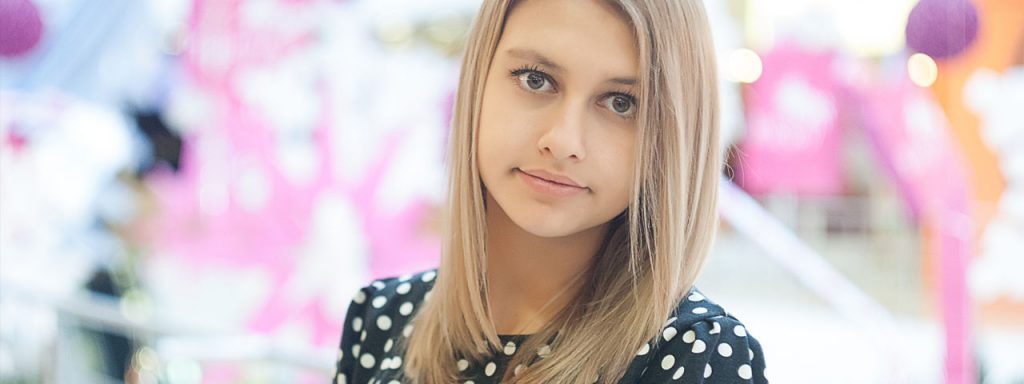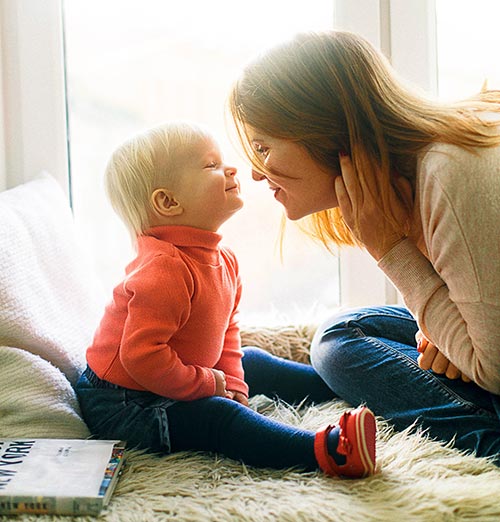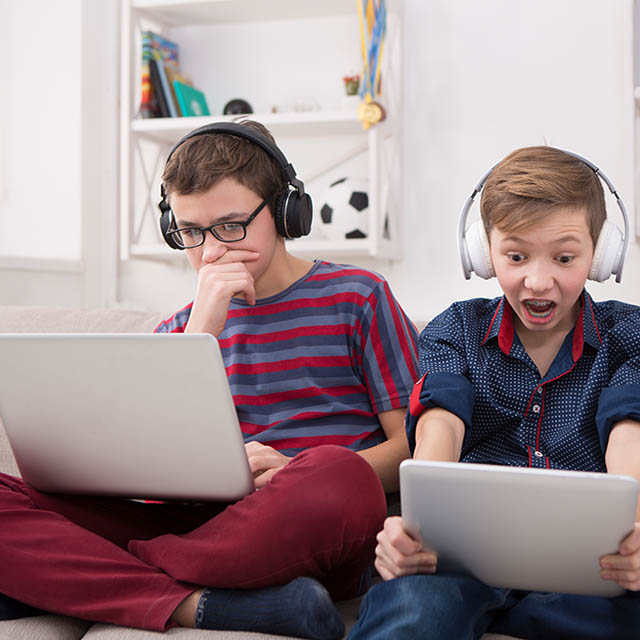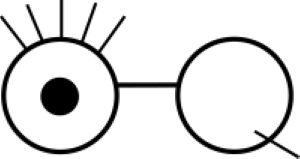
Vision Therapy for Kids with ADD or ADHD
Functional vision problems in children can produce a similar set of symptoms to those found in ADHD, such as difficulty focusing in school, tendency to fidget or squirm in their seats and making careless mistakes. Visual integration problems can lead to skipping lines, confusing words and word-order and generally making it impossible to read accurately. This perpetually makes bright children seem like they just don’t get it, and results in secondary behavioral issues.
If your child displays poor attention in school, don’t automatically assume that it’s Attention Deficit Disorder (ADD) or Attention Deficit Hyperactivity Disorder (ADHD).
At the Eye Q Optometrist, we’ve seen many instances in which a child diagnosed with ADD or ADHD had all the symptoms of the disorder. Following a thorough eye evaluation, however, our eye doctors it was often concluded that the issue may not be ADHD, but rather undiagnosed functional vision problems.
What is a Functional Vision Problem?
Functional vision is the set of visual skills that a person uses to gather and process vision information. In other words, functional vision is how your entire visual system — the eyes, the brain, the visual pathways — work together to help you accurately interpret and interact with your environment.
Does My Child Have ADD, ADHD, or a Vision Problem?
Studies show that children with functional vision issues are twice as likely to be diagnosed with ADD or ADHD as compared to their peers.

When the visual skills in children don’t operate properly, certain symptoms and behaviors can appear:
Difficulty paying attention in class: regular classroom tasks become much more challenging for those with functional vision problems. As they struggle with the tasks, students may become more frustrated, tired, fidgety, or stop trying altogether and stare into space.
Trouble reading. Difficulty with eye teaming can make the act of reading difficult and uncomfortable on the eyes. Certain kids may push past the discomfort and read at a slower rate, while others may just stop trying altogether.
Not responding normally when spoken to. A child with a functional vision problem needs to work much harder than the typical student when attempting to focus on the board. As a result of focusing their energies so intently, they may not be able to process the information in their surrounding environment, such as when being spoken to. These children may also become understandably frustrated affecting their attitude in the classroom.
Inattentive to details. Kids with functional vision problems typically have a limited window of time in which they can complete near work, such as reading and writing. They tend to feel rushed to get through their work before developing blurred or double vision, eye strain, or headaches. As a result of this rush, the student may skip important details and make careless mistakes along the way.
Poor performance when playing sports and other physical activities.
Children with functional vision problems may experience difficulty seeing a ball fly through the air or assess their physical distance to others on a playing field. This can be perceived as poor sports performance and can affect their social lives and confidence levels.
Further symptoms associated with Functional Vision Problems
While the following reactions can be blamed on stress or attention problems, they’re most likely the result of vision difficulties.
- Avoids reading activities
- Excessive squinting
- Feelings of low self esteem
- Frequent rubbing of the eyes
- Lack of interest in hobbies
How Can Vision Therapy Help My Child?
Vision therapy is a personalized set of vision-developing exercises that improve and strengthen visual functions and retrain the brain to interpret visual input more accurately. It’s usually compared to physical therapy, but improves the functioning of the eyes and visual system.
Vision Therapy can include exercises for:
- Eye teaming
- Focusing
- Convergence
- Hand-eye coordination
- Visual perception
- Visual tracking
If your 4th-grade daughter isn’t seeing the board clearly in school, her vision therapy could include lenses and prisms. The doctor may have her look through different kinds of lenses – each with a different degree of lens power – or special prisms held at different angles. This will teach her eyes to better focus on images or objects at various distances.
Your 3rd grader is intuitive and intelligent, so they move on to 4th grade. Only now, they’re expected to read more challenging books and do more complex schoolwork. This becomes a struggle as they cannot make sense of the words on the page. That’s where vision therapy can help.
Do you think your child’s ADHD-like symptoms may be the result of a vision problem? Schedule a functional vision evaluation with our eye doctors to find out. If it is determined that the issue is in fact vision-related, a customized vision therapy program for will be provided, based on your child’s own unique needs.

What If My Child Was Misdiagnosed With ADD or ADHD?
An incorrect diagnosis can result in serious repercussions. Your child may be prescribed strong medications, such as Ritalin or Adderall. These medications alter dopamine levels in the brain in order to increase your child’s focus and concentration levels. However, their side effects are notoriously unpleasant. These include sleep disruptions, nausea, loss or increase of appetite, mood swings and/or depression. Not only is the child taking medications and dealing with unpleasant side effects, but any undiagnosed vision problems haven’t been resolved.
Moreover, if your child has been misdiagnosed with ADD or ADHD, they can be subject to stigmas and negative behaviors from their peers, which can harm their self-esteem and confidence levels well into their adult years.
Give your child the tools they need to succeed in school and in life and schedule an appointment with our eye doctors at Eye Q Optometrist.
How Quickly Will We Notice Results?
Often there are gains seen within days or weeks. However, It can take up to 6 months to see the full results, although this may depend on each patient and their specific therapy regimen. In addition to the exercises, visual aids, or eyeglasses, the vision therapy plan includes close monitoring and follow-up appointments. Over the course of the program, the doctor will determine how many visits are needed in order to achieve the best results.
How We Can Help
Understanding the difference between actual attention disorders and similar behaviors caused by vision problems is of utmost importance, and can save you and your child the frustration of being placed in the wrong camp and treating the wrong problem. Thanks to the breadth of knowledge and years of experience, our eye doctors will be able to determine if any underlying functional vision problems are impacting your child.
At Eye Q Optometrist our goal is to ensure your children’s visual health develops correctly so that they excel in school and in life. We do this by teaching them a variety of techniques to strengthen the functioning of their eyes, focus on images at both near and far distances, eye teaming and more. As the young patient learns and practices these skills and techniques, they will retain what they’ve learned throughout adulthood.
Even if you’ve tried medications, alternative therapies, or feel as if you’ve exhausted every avenue to help your child, talk to us. Eye Q Optometrist provides customized vision therapy for our young patients in New York City, Scarsdale, Rye and Mamaroneck, in New York. Let us help your child maximize their visual skills and reach their full potential.
